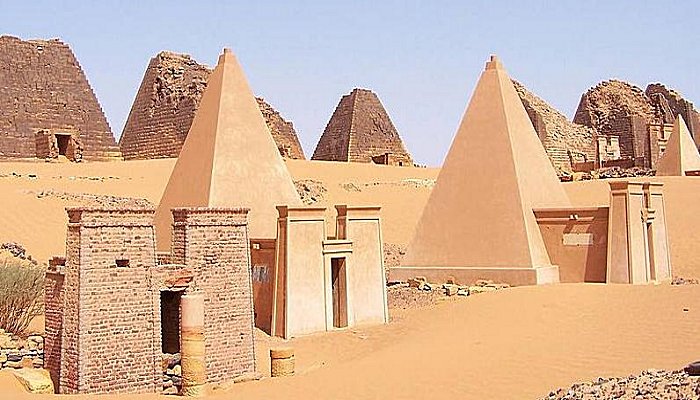Kingdom Of Nubia: Pyramids And Priceless Secrets Of A Civilization Forgotten Long Time Ago
A. Sutherland - AncientPages.com - Once a highly sophisticated and influential civilization in Nubia, it was located in northern Sudan.
Nubian temples. An entrance to the Great Enclosure. Image credit: COSV - CC BY-SA 3.0
Today, the ancient kingdom of Nubia is almost forgotten by history and neglected by archaeology because the wonders of ancient Egyptian monuments and pyramids pushed the Nubian Empire into oblivion.
There are many pyramids in Sudan or even more than in Egypt, but they cannot be compared with those of Egypt in magnitude, though they are much more artistic.
The pyramids, beautiful avenues of animals and statutes, temples, and colonnades are still standing at Meroe. The oldest pyramids of Sudan date back to the eighth century BC. They were built near the modern Sudanese city of Karima, on the eastern bank of the Nile.
Their sandstone was less durable than that of Egypt, and probably, therefore, about eighty pyramids have been damaged despite Sudan's remote and rugged countryside, which is uncomfortable for tourists, and the country's very difficult political situation.
Pyramids N26 and N27. Image credit: Wufei07 - Public Domain
The oldest pyramids of Sudan date back to the eighth century BC. They were built near the modern Sudanese city of Karima, on the eastern bank of the Nile. In the distant past, Karima—with a proud name—Napata was a very impressive place. It was the capital city of Kush, the abode of Napatan gods and kings, and had pyramids devoted to them.
The Great Temple of Amun once stood at the foot of a mountain called Jabal Barkal (Gebel Barkal) - the 'Pure Mountain.' An important city was established at the foot of this mountain, which was more than 325 feet high.
The city of Napata was so powerful that one day, it decided about the future of Egypt. An inscription from the reign of Tuthmosis III says that he (Tuthmosis III) was the first king to begin building there. Today, only the ruins are left.
About 730 BC, the Nubian King Piye (formerly called Piankhi, who reigned ca. 743-712 BC, invaded and conquered Egypt. Ancient Nubia flourished, and its rulers adopted the old pharaonic tradition of raising massive tombs.
Detail of Pyramid Chapel Beg. N1 at Meroe. Image credit: Clemens Schmillen - CC BY-SA 4.0 DEED
But the greatness of ancient Nubia—also known as the kingdom of Kush—goes further back. Five thousand years ago, the kingdom was both a cultural center and military power on the African continent.
Ancient Nubia is mentioned in the Old Testament under the name Kush" or "Cush." According to the Old Testament, Cush ("Kush") was the eldest son of Ham, brother of Canaan, and the father of Nimrod!
Nubian gold was exploited for 2,000 years by the Egyptian pharaohs in the Wadi El Allaqi, and Nubian land has long been known for its gold deliveries.
For thousands of years, the people of Nubia and Egypt have deeply believed in the sun's regenerative powers and associated gold with them. Craftsmen formed this metal into amazing armlets, pendants, earrings, and other jewelry pieces that decorated the bodies of wealthy and prominent people. The golden jewelry signified status, wealth, and power and protected the wearer from harmful forces.
So called Roman Kiosk and Apedemak Temple in Naqa - Archaeological Sites of the Island of Meroe (Sudan). Roman Kiosk and Apedemak Temple in Naqa. Ron Van Oers - This place is a UNESCO World Heritage Site. Image credit: Ron Van Oers - CC BY-SA 3.0 igo
The Sudanese pyramids are smaller than the Egyptian ones, but they have a history, and many have survived intact.
Nubian royal pyramids were built long after they had ceased to be built in neighboring Egypt. After 308 BC, the Nubian kings also began to make the first pyramids at the cemetery of Meroe, located between the 5th and 6th cataracts.
They are step-sided, 10 to 30 meters high, and built of sandstone. Later, in the region of royal cemeteries at el-Kurru, Jebel (Gebel) Barkal, Nuri, and Meroe raised about 180 pyramids. After death, the kings were buried in large tombs built under the pyramids. The oldest are the pyramids built at the royal cemetery at El-Kurru with tombs of four great Nubian kings, located about 12 km south of the Jebel Barkal, on the right bank of the Nile River.
At Nuri cemetery, 21 kings and 52 queens and princesses are buried.
Meroe remained the royal cemetery for 600 years until AD 350. It is located a day trip from Khartoum, the capital of Sudan. The kings lived at Meroe city.
Meroe - a wealthy metropolis of the ancient kingdom of Kush - was a powerful place. It had an army of 250,000 trained men and 400,000 artisans; Meroe was a city of enormous size. It covered an almost unbelievable area.
Interestingly, the ruins Pliny described had disappeared in Roman times, so the place must have been very ancient. Today, the city's ruins are considered the most significant archaeological site in the world.
In fact, many Sudanese pyramids were robbed in ancient times and in modern times, too. Earlier unearthed artifacts are evidence of the great Kingdom of Kush's economic and artistic development. And there is still plenty to be discovered on the ancient Nubian ground.
We talk so much about ancient China, Egypt, Mayas, and Incas, but we only sometimes mention Nubia. Even though there are almost 300 hundred already known pyramids, we never say the pyramids of Sudan.
How many of them are still waiting for discovery? Sudan's history from the early Stone Age to the 19th century is fascinating. It is still home to some ancient sites and great monuments from the African continent.
This country was sometimes poor and dry. For many millennia, the land was fertile and well-watered. Later, the desert gradually advanced and lifeless sand-covered Sudan. In this environment, the first Kushite kingdom developed into real power. In the years 1958–1964, an international operation to save the monuments of Nubia took place under the patronage of UNESCO.
Back in 2003, Charles Bonnet, an archaeologist, led a Swiss team to carry out excavations near Kerma. They discovered many monumental black granite statues of the Pharaohs from Egypt's 25th Dynasty (now at the Kerma Museum). The collection includes sculptures of Taharqa and Tanoutamon, the final two pharaohs of that dynasty. Their statues are hailed as "masterpieces" and considered some of the finest works in art history.
Written by – A. Sutherland AncientPages.com Staff Writer
Updated on Apr 10, 2024
Copyright © AncientPages.com All rights reserved. This material may not be published, broadcast, rewritten or redistributed in whole or part without the express written permission of AncientPages.com
Expand for referencesReferences:
Great Events from History: The Ancient World, Prehistory
Welsby, Derek A. The Kingdom of Kush: The Napatan and Meroitic Empires
O’Connor, David. Ancient Nubia
More From Ancient Pages
-
 Strange Engraving Made By Knights Templar In French Village – Riddle Of The Rod – Part 1
Featured Stories | Oct 7, 2019
Strange Engraving Made By Knights Templar In French Village – Riddle Of The Rod – Part 1
Featured Stories | Oct 7, 2019 -
 Intriguing Genetics: First Ancient Irish Human Genomes – Sequenced
Archaeology | Dec 29, 2015
Intriguing Genetics: First Ancient Irish Human Genomes – Sequenced
Archaeology | Dec 29, 2015 -
 First Known Depiction Of The Biblical Heroines Deborah And Jael Unearthed On 1,600-Year-Old Mosaics
Archaeology | Jul 6, 2022
First Known Depiction Of The Biblical Heroines Deborah And Jael Unearthed On 1,600-Year-Old Mosaics
Archaeology | Jul 6, 2022 -
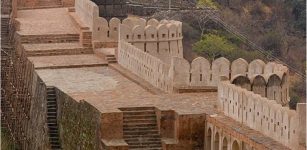 Magnificent And Massive Great Wall Of India – Astonishing Ancient Structure Shrouded In Secrecy
Civilizations | Jul 7, 2015
Magnificent And Massive Great Wall Of India – Astonishing Ancient Structure Shrouded In Secrecy
Civilizations | Jul 7, 2015 -
 Minutes Did Not Exist During The Middle Ages
Ancient History Facts | Mar 2, 2016
Minutes Did Not Exist During The Middle Ages
Ancient History Facts | Mar 2, 2016 -
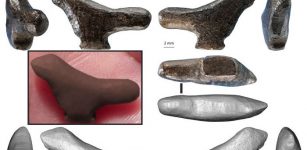 Paleolithic Standing Bird Figurine – East Asian 3-D Art – Recovered From Refuse Heap
Archaeology | Jun 23, 2020
Paleolithic Standing Bird Figurine – East Asian 3-D Art – Recovered From Refuse Heap
Archaeology | Jun 23, 2020 -
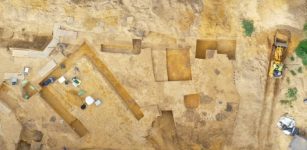 Unusual Mini Temples Discovered In Ancient Roman Camp In Haltern, Germany
Archaeology | Nov 16, 2023
Unusual Mini Temples Discovered In Ancient Roman Camp In Haltern, Germany
Archaeology | Nov 16, 2023 -
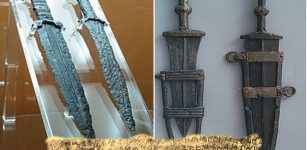 Celtiberians: Intriguing Martial Culture And Their Skilled Warrior Infantry
Civilizations | Mar 29, 2023
Celtiberians: Intriguing Martial Culture And Their Skilled Warrior Infantry
Civilizations | Mar 29, 2023 -
 10 Divine Weapons Of The Gods
Featured Stories | Jul 28, 2015
10 Divine Weapons Of The Gods
Featured Stories | Jul 28, 2015 -
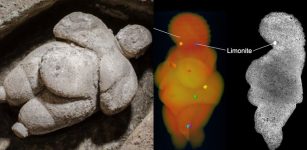 Mystery Of The 30,000-Year-Old Venus Of Willendorf Solved?
Archaeology | Feb 28, 2022
Mystery Of The 30,000-Year-Old Venus Of Willendorf Solved?
Archaeology | Feb 28, 2022 -
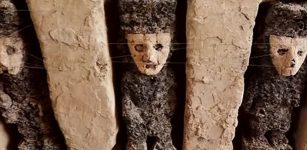 Wooden Pre-Columbian Human-Like Statues Discovered At Chan Chan Complex In Peru
Archaeology | Oct 25, 2018
Wooden Pre-Columbian Human-Like Statues Discovered At Chan Chan Complex In Peru
Archaeology | Oct 25, 2018 -
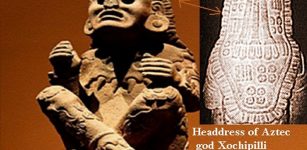 Xochipilli: Aztec God Of Love, Music, Song And Ecstatic Mushroom Trance
Aztec Mythology | May 19, 2018
Xochipilli: Aztec God Of Love, Music, Song And Ecstatic Mushroom Trance
Aztec Mythology | May 19, 2018 -
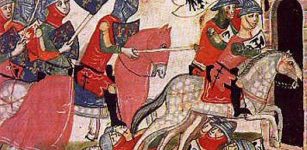 On This Day In History: The Battle Of Benevento Was Fought – On February 26, 1266
News | Feb 26, 2017
On This Day In History: The Battle Of Benevento Was Fought – On February 26, 1266
News | Feb 26, 2017 -
 DNA Sheds Light On Ancient History Of Dogs All The Way To The Ice Age
Archaeology | Oct 30, 2020
DNA Sheds Light On Ancient History Of Dogs All The Way To The Ice Age
Archaeology | Oct 30, 2020 -
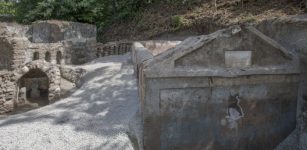 Unusual And Well-Preserved Skeleton Discovered In Ancient Pompeii Sheds New Light On The Cultural Life Of The City
Archaeology | Aug 18, 2021
Unusual And Well-Preserved Skeleton Discovered In Ancient Pompeii Sheds New Light On The Cultural Life Of The City
Archaeology | Aug 18, 2021 -
 On This Day In History: The Gregorian Calendar Implemented – On Oct 5, 1582
News | Oct 5, 2016
On This Day In History: The Gregorian Calendar Implemented – On Oct 5, 1582
News | Oct 5, 2016 -
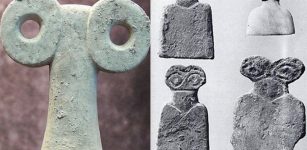 Remarkable Ancient Statues From The Eye Temple – Unique Legacy From Tell Brak, Syria
Artifacts | Jul 20, 2018
Remarkable Ancient Statues From The Eye Temple – Unique Legacy From Tell Brak, Syria
Artifacts | Jul 20, 2018 -
 Mystery Of The Coal On The Pirate Shipwreck Queen Anne’s Revenge Solved
Archaeology | Apr 13, 2023
Mystery Of The Coal On The Pirate Shipwreck Queen Anne’s Revenge Solved
Archaeology | Apr 13, 2023 -
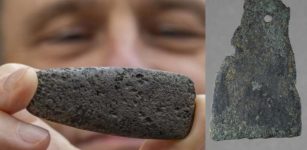 Rare Trove Of Ancient Metal Objects Unearthed In Mississippi Was Left By The Spaniards When The Chickasaws Attacked
Archaeology | Jul 2, 2021
Rare Trove Of Ancient Metal Objects Unearthed In Mississippi Was Left By The Spaniards When The Chickasaws Attacked
Archaeology | Jul 2, 2021 -
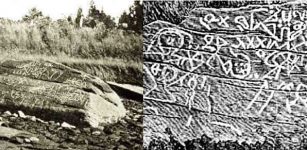 Dighton Rock – Centuries-Old-Mystery Still Unsolved
Featured Stories | Sep 8, 2015
Dighton Rock – Centuries-Old-Mystery Still Unsolved
Featured Stories | Sep 8, 2015


